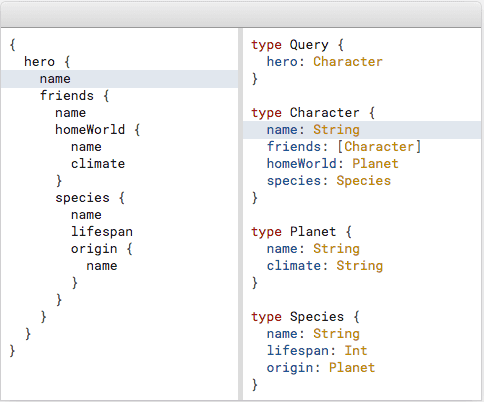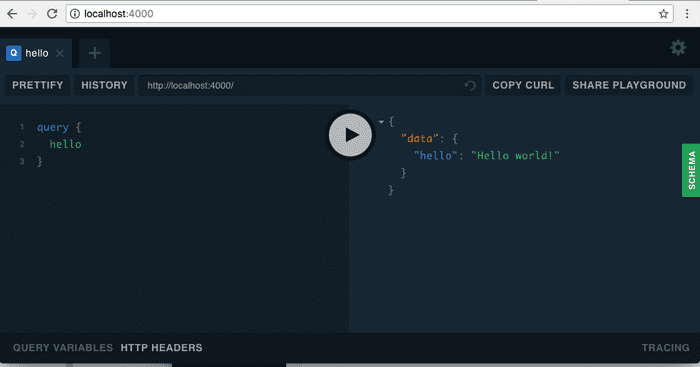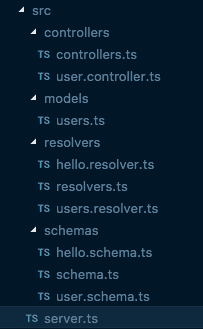
June 05, 2018
It's almost 2 months that I'm working with GraphQL and after a bit of struggling I fallen in 😍love😍. If you never heard about GraphQL I can tell you that it's strongly used by Facebook and, after beeing open-sourced, it has been adopted by other companies like:
- github/v4
- shopify
- neo4j
- more and more
So what is exactly GraphQL and why we should invest our time to learn it?
GraphQL is a query language for APIs and a runtime for fulfilling those queries with your existing data. GraphQL provides a complete and understandable description of the data in your API, gives clients the power to ask for exactly what they need and nothing more, makes it easier to evolve APIs over time, and enables powerful developer tools.
Sorry? Yes this is the same question I had when I read the doc... so let me try to share why I love graphQL. From my short experience I found it very useful because the client has more power and he can ask the data and the fields in the format that he wants. If we think about REST api, they are built in a very strict way and when the application grows it needs to create a lot of endpoints to accomplish all the possible scenarios. Just to give a quick example:

After this brief introduction we can start our configuration installing mongo on our machine. For mac users is quite easy with brew but in case you're not familiar this is the official guide to follow. When the installation is completed we can start mongo server and create our database:
mongod
I use a gui tool called Studio3T to create my db but feel free to use the tool you prefer. The name of our database will be:
graphexample
Now that we almost understood what is and why we should use it let's built our server. The infrastructure we'll build is:
- NodeJs with Typescript
- mongoose
- express
- apollographql/apollo-server 2.0
Let's create a folder called graphql-setup and inside it a file called package.json that will look like that: [gist id="c013d9e434a08a0412933dc6b7118930"]
As you can see we don't have too many dependencies apart apollo, mongoose (the connector for mongo) and typescript.
In the script section we created dev and prod but we're going to use dev for our tests running the command:
npm run dev
Due of typescript we need a tsconfig.json and tslint.json to compile the project and set stylistic rules like indentation, whitespace, etc. If you've no idea how to create them you can easily copy paste them:
- tsconfig.json: https://github.com/daniele-zurico/graphql-setup/blob/graph2/tsconfig.json
- tslint.json: https://github.com/daniele-zurico/graphql-setup/blob/graph2/tslint.json
We need to create a src folder and under it same sub-folder to organise better our code:
- schemas: Required by GraphQL and provides a clear contract for client-server communication. It's an abstract description of the server’s capabilities;
- resolvers: Each field in a GraphQL schema is backed by a resolver. Each resolver knows how to fetch the data for its field;
- models: Used by mongo/mongoose to describe each collection and the schema that is using;
- controllers: it's where the action happens, it defines the logic and the action to take to retrieve the information we need;
- server.ts: the starting point!.
The server.ts will take care to startup our server with mongo, graphQL and express: [gist id="7089cd76786961975a68e090398232db"]
- Line 1-8 we startup mongo giving a port,url and a dbname.
- Line 10 is not used at the moment but it can be useful if for some reason in the future we want to add express functionality.
- Line 12 caused me a lot of stress. It's a short line but it's really powerful. It allows you to perform what they call Schema stitching and is the process of creating a single GraphQL schema from multiple underlying GraphQL APIs. In other words my main point was to create multiple schemas and resolvers instead to put everything in one massive file and at the end connect everything togheter.
- Line 18 to 27 startup our server.
In the schema folder we'll create 3 files:
- schema.ts: used by line 12 of server.ts. It will create an array of all the schema that we want to define
- user.schema.ts: Schema definition for the users
- hello.schema.ts: A project without helloWorld is not a project :D
[gist id="e21f1b0752a75e10bc4925d41bc159e7"]
[gist id="0b59f3e2f1f2558bda47d295ca2cbb5b"] hello.schema.ts defines simple query definition called hello
[gist id="7497a4b46616d91c85e6da138c2b3626"] Let's stop one moment and explain better what is inside user.schema.ts. It contains 3 main block: - query - mutations - User The query (line 11) will retrieve the list of users (an array) where each of them will contains id, name and surname (line 18). The mutations, instead, will mutate the structure of our database adding, deleting or update a user. After defining the capabilities of our GraphQL database we need to implement them with our resolvers.
The resolvers folder will create the same structure of schema folder:
- resolvers.ts: used by line 12 of server.ts. It will create an array of all the resolvers that we want to define
- hello.resolver.ts: implements the functionalities described by hello.schema
- users.resolver.ts: implements the functionalities described by user.schema
[gist id="64f577dc45281449812663f9c4217708"]
[gist id="57742ada49816780983ff04a380eead0"]
[gist id="2a15f1c28b9cb616ac4bb72bac41a8c9"]
The most complicated one is the users.resolver.ts because it's performing mutations and query. For each action, it's calling the userController that will go to our mongo db database and will return the expected result. The arguments of each resolver are:
- roots: not really used
- args: the arguments passed by the schema
- context: used if we want to apply some restrictions (authorisation and authentication) - defined in our server.ts
Our controller folder will keep exactly the same structure:
- controllers: will export all the controller available
- user.controller: will perform the query in our mongodb
[gist id="b93fecfb1b75aa6bb11e9ab300d29435"] [gist id="963d3c5ac9e05813b776846b001e3910"]
Finally we can run our server:
npm run dev
open the browser:
ttp://localhost:4000/
and try out some of the actions we defined:

- Fetch all the users:
query{
allUsers {
id
name
surname
}
}
- create a new user
mutation {
addUser(name: "adrian", surname: "goHenry") {
name
surname
}
}
- delete existing user
mutation {
deleteUser(id: "5b0d6ad0b4d7720413da7ebe") {
name
surname
}
}
- update existing user
mutation {
updateUser(id: "5b0d61e636c7c0f9c65947cc", name: "daniele", surname: "zurico") {
_id
name
surname
}
}
I setup a git repro if you want to have a try without performing all the steps I described:
https://github.com/daniele-zurico/graphql-setup/tree/graph2
If you think I can optimise or I did something wrong or you simply enjoyed it please leave a comment and follow me on twitter @DZurico
Resources
- apollographql: https://www.apollographql.com/docs/apollo-server/v2/ - graphQL.org: https://graphql.org/learn/

